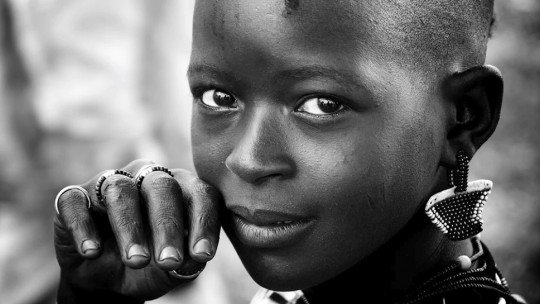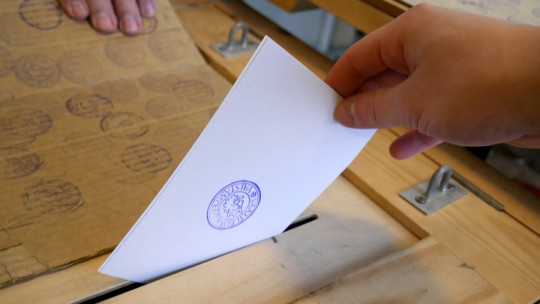
Cultures are not hermetic, so they often acquire elements from outside or they share their own with others. Cross-cultural diffusion is an example of this.
We will delve into the anthropological phenomena that explain these contacts between cultures in which one acquires customs or concepts from the others. We will also see the types that can occur and the theories that try to offer models for this phenomenon.
What is cross-cultural diffusion?
Transcultural diffusion is a concept referred to anthropology, specifically to its cultural aspect, which refers to the spread of the elements of a culture, whether internal, through contact between individuals of the same culture, or external If, on the other hand, the phenomenon takes place between two people from different cultures.
Through this mechanism, a culture can contribute to others from simple customs to differentiating elements such as a language, a religion or even complex technological developments that can be the catalyst for a change of era in said civilization, so we are talking about an extraordinarily process. powerful for cultural enrichment.
The first to speak of cross-cultural diffusion and, therefore, the author who coined this term, was Leo Frobenius, a German ethnologist. It was in his work The Culture of West Africa, where the concept initially appeared and from then on it was established in the glossary of anthropology as one of the fundamental terms to be able to talk about these changes in cultures.
It is important Do not confuse cross-cultural diffusion with the diffusion of innovations, another very important phenomenon used in anthropology and sociology but with a different meaning. In the case of the second term, it refers to how ideas about technological improvements pass from one culture to another. One of the most classic examples is the mastery of metallurgy that allowed societies to enter the Iron Age.
Types of cross-cultural diffusion
Cross-cultural diffusion can take place through different methods. We are going to review all of them to know all the possible types that can occur.
1. Diffusion by expansion
The first way for an element to be transmitted between cultures (or within it) occurs through expansion. What does it consist of? In what The specific characteristic has been generated in a certain place, which would be the nucleus, and from there it has begun to be transmitted geographically first to neighboring areas and later to more distant ones.
2. Diffusion through migration
The second type to generate cross-cultural diffusion is migration. As in the previous case, we would be talking about a cultural unit that has emerged in one place and from there has been transmitted to another location. The difference is that in this case, said cultural element is moved, not copied, so it is no longer in its original location to permanently migrate to the new one.
3. Diffusion by hierarchy
Yet another form of cross-cultural diffusion is that which occurs in a hierarchical manner. It is a form of geographical expansion with a peculiarity, and that is that The place from which the new cultural element comes has a higher hierarchy than those areas to which it will be exported which in some way would be subordinate and would assimilate the concept out of obligation.
4. Diffusion by imitation
In other cases, cross-cultural diffusion is carried out through a process of imitation, so that An individual observes another make use of the cultural element in question and this is when he suffers the contagion of this starting to take it as their own and therefore expanding its use.
5. Diffusion by association
Finally we would find cross-cultural diffusion by association. How does this happen? This is a special case in which there is a main cultural element, which is the one that is being transmitted, by any of the methods that we have seen before, but also There are other elements that are associated with the first in some way and when this is transmitted, they accompany it in the process in an indirect way.
Different origins of cross-cultural diffusion
We have taken a tour of the types of transcultural diffusion in terms of the process that the cultural element takes to move to another place. Now let’s get to know the mechanisms by which a culture can spread so that its components are assimilated by another
1. Form of direct diffusion
The first form of cross-cultural diffusion is that which occurs directly between one culture and another due to their proximity. We can visualize it on a large scale, between two contiguous human populations that relate, either peacefully (trade routes, tourism, etc.) or also aggressively, through wars and other conflicts.
But It can also occur on a small scale, between two people from different cultures that due to their friendship or relationship they exchange elements of their respective cultures that in the end end up being collected and integrated by the other party as something of their own.
2. Form of indirect diffusion
When we talk about the form of indirect diffusion we are referring to members of two different cultures that, in this case, They do not have direct contact, so the exchange of elements is carried out through a common denominator which would be a third culture, which would be acting as an intermediary between the two.
Therefore, in this cross-cultural diffusion mechanism, culture A would transfer some of its elements to culture B, which in the future would also be spread from culture B to culture C. In this way, culture A would have exported some of its characteristics to culture C without any direct contact between them.
3. Form of imposed diffusion
But not all cultural exchanges occur naturally. There are many examples of dominant cultures that have forced other less powerful ones to assume characteristics that did not correspond to them in order to standardize with it. This is the case of people and nations that throughout history have invaded other territories and forced the inhabitants to abandon practices that conflicted with their customs.
This is the mechanism of imposed or forced diffusion. The differentiating element would be that of imposition versus the voluntary nature of the other methods.
Theories about cross-cultural diffusion
There are different theoretical models that try to explain the phenomenon of cross-cultural diffusion. Let’s take a closer look at each model.
1. Migrations
One of them refers to the migratory processes of human populations The migratory model states that it is through these movements that cultures manage to expand and penetrate others, sometimes overlapping and sometimes mixing.
2. Cultural circles
On the other hand, the diffusionism model in cultural circles proposes the idea that originally there was a very small group of cultures and it was through relationships between them including cross-cultural diffusion and splits how we reached the large number we have today.
3. Culture bullet
Another of these theories is that of the culture bullet or Kultur-kugel, with its original name in German. This idea, proposed by archaeologist James Patrick Mallory, states that Cross-cultural diffusion is more frequent for language elements than for other cultural elements such as those of a material nature or those that affect the social structure of the group in question.
4. Evolutionary diffusionism
A theory called evolutionary diffusionism has also been proposed. The approach of this model speaks of a form of cross-cultural diffusion that does not actually imply that one culture spreads an element over another, but rather that said element arises at the same time in separate cultures because both have reached an evolutionary stage that provides the necessary conditions for that new element to emerge.
5. Hyperdiffusionism
Finally we would find hyperdiffusionism, which takes the theory of cultural circles to its extreme, indicating that in reality, in the beginning, there were not even a few primitive cultures, but there was only one It was through migratory processes that human groups populated other corners, bringing that culture to those places and experiencing changes from then on.
Authors such as Antonio de León Pinelo believed in this theory to the point of stating that humanity had originated in what would today be South America and more specifically in the area of Bolivia, and then began to expand to the rest of the globe. It would be one of the first hyperdiffusionist approaches that would try to explain cross-cultural diffusion.








